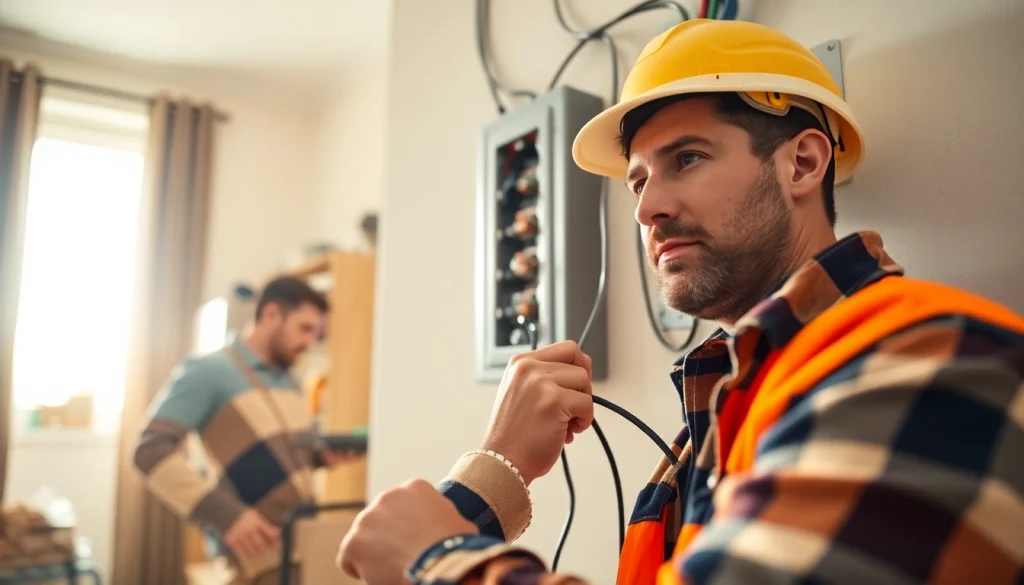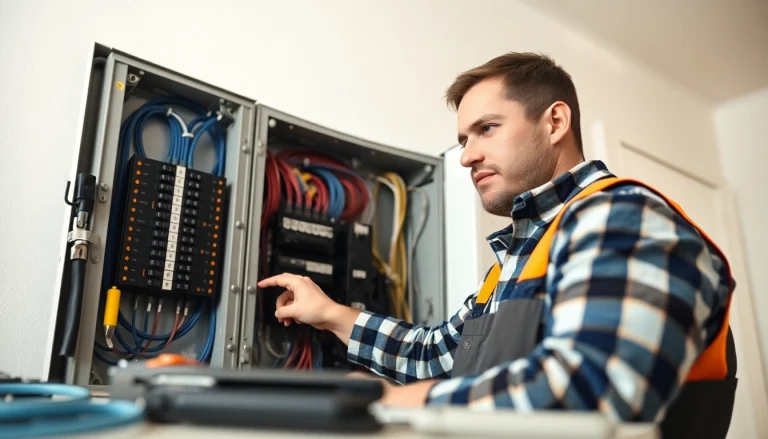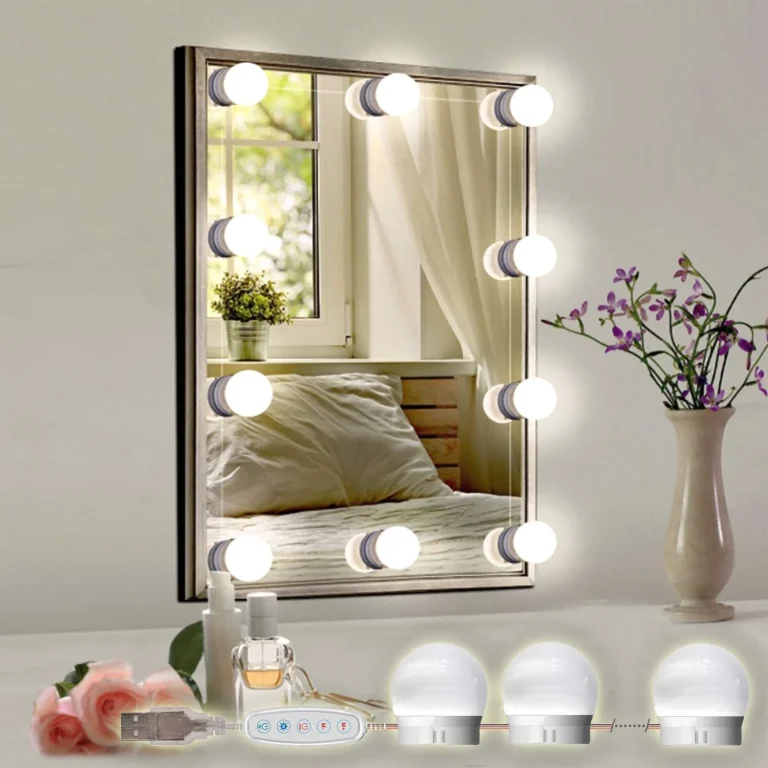
Understanding the Function of Electrical Panel
What is an Electrical Panel?
An electrical panel, often referred to as a breaker box or service panel, is a critical component of your home’s electrical system. It serves as the central hub where electricity is distributed throughout your property. This device is essential for managing the various circuits in a home or building and is designed to safely deliver electrical power to different areas, appliances, and devices.
The functionality of the electrical panel can be likened to the heart of the body—it circulates energy where it is needed while maintaining order within the electrical system. Understanding what an electrical panel is and how it operates is a fundamental need for homeowners to ensure the safety and efficiency of their electrical systems. For a deeper dive into when it’s time to upgrade your Electrical Panel, check out Electrical Panel.
How Electrical Panel Distributes Power
The main function of an electrical panel is to receive electricity from the utility company and distribute it to various circuits throughout the home. This is done via a series of circuit breakers that regulate and protect each individual circuit. Each breaker is designed to trip, or disconnect, the circuit in the event of an overload or fault, avoiding potential fires or equipment damage.
Electricity enters the panel through a main feed line and is distributed to branch circuits which power everything from outlets to lighting. This organized distribution helps in managing load effectively and ensuring that various parts of the property receive the necessary power without exceeding the system’s limits.
Common Components of an Electrical Panel
The typical electrical panel consists of several key components:
- Main Breaker: This is the switch that turns off all power to the electrical panel; it acts as a safety device.
- Circuit Breakers: These are devices that protect the electrical circuits. Each one controls a specific circuit and will trip if the circuit is overloaded.
- Bus Bars: Conductive metal strips that distribute electricity to individual circuit breakers.
- Grounding Bar: This is used for grounding the electrical system, enhancing safety by minimizing the risk of electric shock.
- Neutral Bus Bar: This is where the neutral wires from the circuits connect, helping to maintain a balanced electrical load.
Understanding these components is vital for homeowners who wish to monitor their electrical systems, ensuring they are functioning properly.
Signs You Need a New Electrical Panel
Outdated Electrical Systems
If your home has an electrical panel that is over 25 years old, it may be time to consider an upgrade. Older panels often do not meet the energy demands of modern households, leading to a range of issues including safety hazards and insufficient power supply for contemporary appliances.
Outdated panels may also lack modern safety features, such as GFCI (Ground Fault Circuit Interrupter) protections, which are crucial for preventing electrical shocks in wet environments. Homeowners should regularly assess the age of their electrical panel against current safety standards.
Frequent Circuit Breaker Trips
A common indication of an electrical panel issue is the frequent tripping of circuit breakers. This can signal that your panel is unable to handle the electrical load demanded by your home or that there is a potential wiring issue that needs to be addressed. Constant interruptions can be extremely inconvenient and are a clear sign that an upgrade or repair may be necessary.
Each circuit breaker is designed to handle a specific amount of electrical current. If you find that multiple breakers are tripping often, it may be time to evaluate the load capacity of your panel and consider options that better fit your needs.
Increased Power Needs
As households evolve, so do their electrical needs. If you’ve recently added significant electrical loads—like new appliances, HVAC systems, or home office equipment—your existing panel might not be adequate. Insufficient panels can lead to overheating, electrical system failures, and dangerous conditions such as fires.
Homeowners should monitor their power usage to identify patterns or changes in demand. If utilizing multiple high-power devices leads to circuit overloads, it’s a strong indication that an upgrade is required to safely accommodate your lifestyle.
Types of Electrical Panels Available
Standard Breaker Panels
Standard breaker panels are the most commonly used electrical panels in residential properties. They typically include a main breaker and several individual circuit breakers that control the power supply to different areas of the home.
These panels are straightforward in design and operation, making them a suitable choice for most households. They can be customized to meet specific electricity needs by adjusting the number of circuits and ampacity based on demand.
Smart Electrical Panels
As technology advances, so too do electrical panels. Smart electrical panels offer several innovations that enhance functionality, including real-time monitoring of energy usage and remote management capabilities. They can alert homeowners via smartphone apps regarding issues such as power surges or outages.
Integrating smart technology into your electrical system could provide valuable insights into energy efficiency, allowing homeowners to make informed decisions about power consumption and manage their systems more effectively.
Sub Panels and Their Uses
Sub panels are secondary electrical panels that extend the capacity of a main panel. They are often installed to handle additional electrical loads in specific areas of a home or to power separate outdoor structures like garages or workshops. By distributing the load more evenly, sub panels help prevent overloading the main system.
Sub panels can significantly reduce the likelihood of tripped breakers and electrical issues by ensuring that circuits are not being overloaded. They also enhance accessibility when it comes to circuit management, as homeowners can turn off power to specific areas without affecting the entire home.
Cost Factors for Electrical Panel Upgrades
Material and Equipment Costs
The costs associated with upgrading an electrical panel can vary widely based on various factors including the type of panel, the number of circuits, and the specifications of the installation. Standard breaker panels are typically less expensive than smart panels, which incorporate advanced technology and features.
It’s essential to evaluate the types of materials needed for installation. Higher quality components can lead to a more durable and reliable system, although they may come with higher initial costs. Investing in quality equipment can often save money in the long run through improved safety and efficiency.
Installation Labor Expenses
The cost of labor for installing an electrical panel can add a significant amount to the overall expense. Factors influencing labor costs include the complexity of the installation, local labor rates, and the level of experience of the electrician. It’s wise to get multiple quotes from licensed professionals to ensure you’re getting a fair price.
Homeowners should prioritize hiring qualified electricians who can ensure the installation meets local codes and safety regulations. While it may seem cost-effective to cut corners on labor, inadequate installations can lead to costly repairs and increased risks down the line.
Additional Features to Consider
When upgrading an electrical panel, additional features can enhance functionality and safety. These may include surge protection systems, energy-efficient components, or advanced monitoring tools. Each added feature typically raises the initial costs but can provide significant benefits in energy savings and protection from electrical faults.
Homeowners should weigh the benefits of these features against their long-term needs and preferences. By planning ahead, they can make wiser investment decisions that will yield benefits far beyond the initial installation costs.
Best Practices for Maintaining Your Electrical Panel
Regular Inspections and Cleaning
To keep an electrical panel functioning safely and effectively, regular inspections and maintenance are essential. Homeowners should inspect their panels periodically to look for signs of wear, corrosion, or physical damage.
Cleaning the panel and its surrounding area can also prevent dust and debris from causing overheating or electrical fires. Keeping everything organized will facilitate easier access during repairs or checks performed by professionals.
Signs of Wear and Tear
Homeowners should remain vigilant about the signs of wear and tear on their electrical panels. If you notice any unusual burning odors, discoloration, or unusual noises coming from your panel, it’s important to contact a licensed electrician immediately to assess the situation.
Additionally, keep an eye out for frequently tripped breakers or flickering lights, as these can signal underlying issues that need addressing before they become more serious safety concerns.
Safety Tips for Homeowners
Safety is paramount when it comes to electrical systems. Homeowners should never attempt to work on their electrical panel unless properly trained and licensed. Always ensure that the panel is powered down before performing any maintenance or inspections.
It’s advisable to have a qualified electrician inspect your panel at least once every few years, particularly if you experience frequent problems or suspect that your electrical needs have changed as your household evolves.






